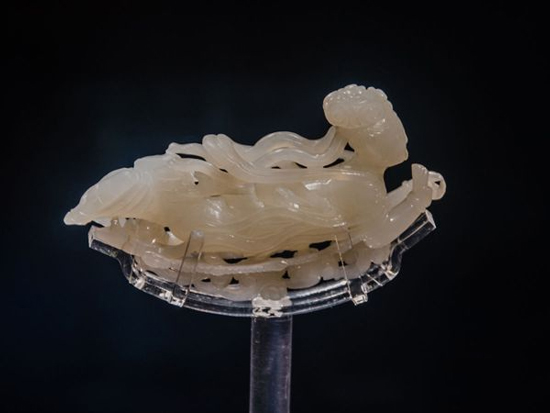The relationship between Chinese jade culture and Buddhist culture has a long history. The oldest jade road in China (4000 noon BC) is not only the passage of the Kunlun beauty jade in the western region, the transportation of Hetian jade to the Central Plains, but also the cultural exchange between the Western Region and the Central Plains. And the spread of Buddhism's cultural road shows that Chinese jade culture and Buddhist culture are inherently inextricably linked. Buddhism was created in ancient Tianzhu (Ancient India), and was introduced to China in the 2nd year BC (Yuanshou first year) when Han Xin, the emperor of Han Dynasty, was in the dynasty. The Buddhist monk of the Western Regions, the emperor of the United States, came to the DPRK, and the doctoral disciple Jing Lu was from the Iraqi depository. Since then, Buddhism has obtained official legal status in the Western Han Dynasty. Buddhism culture was popular in the Wei, Jin and Southern and Northern Dynasties. It flourished in the Tang Dynasty, merged with the feudal patriarchal thoughts of Confucianism in China, and integrated into Chinese traditional culture. The Buddhist culture in the Tang Dynasty is rich in cultural connotations. It is an important cultural feature of the jade articles of the Tang Dynasty. Among them, Feitian is a typical representative (the source of Yufeitian). It is the earliest flying jade in today's era, and the leader of the later jade. . The materials used in the Feitian jade in the Tang Dynasty were carved from Xinjiang Hetian Yangzhiyu and Baiyu, and the sacredness and nobleness of the mountain were expressed in the jade and art. Feitian is one of the Buddhist gods of India. The Hindu Sanskrit called them "Gangdapo" and "Jinnao", that is, Tiange God and Tianle God, is the prototype of Feitian image. Legend has it that a couple flew together into the Paradise of the Elysian, living in the beautiful Tiangong Shibao Mountain, playing the piano and singing in the Buddha, so it is called flying. Yang Hengzhi called it "Flying Heaven and Music" in "Luoyang Jialanji". Feitian is a flying god with special functions. In Buddhism, it is portrayed as a fragrance that can sing and dance, and bring joy and happiness to the people. The styling features a light and beautiful woman, wearing a long skirt and a streamer, holding a lotus flower and holding a lotus flower. Fluttering nine miles, invited to swim in the sky, flying in space. The artistic style of Yu Feitian is sleek and charming, elegant and sleek, and the emotions are continuous, especially the beauty of the agility. The reason why the flying of Buddhism in the Tang Dynasty was widely accepted in China was because there were Taoist immortals in the Chinese mainland - the feathers. Taoism has the saying that "the immortal, the beam into the cloud, the wingless flight or the ride on the cloud, the creation of the heavens", the feathers of the foreign Buddhism have the same effect, so it can be hit. The shape of jade is based on ideology and is oriented. The image of Feitian is a hybrid of "inherited and changed" on the basis of Indian Buddhist art. The Chinese-style jade flying sky has the characteristics of Chinese national culture, and it is integrated into traditional art. Creation, reality (kabuki), imagination (wingless flying), image (floating and flying), the method of shape (image) freehand (intentional), Song expression (sentiment) and reason (ideal) The unity of the performance is the infinite beauty of life. Tang Yufeitian is a product of the combination of ancient romanticism and real life, praising the beauty, kindness, wisdom and dignity of women. Flying from the love of two people to the combination of two, showing a happy life view of the world, flying there, is a Lotte, Le Kong, happy land, is the product of love for life. Tang Yufeitian expressed the exchange, integration and innovation of Buddhism and Taoism culture. Buddhism's blissful heaven is in harmony with the auspicious peace of the Tang Dynasty. Its aesthetic values ​​are joy and social harmony. It shows that the foreign Buddhist culture has evolved into a Chinese-style Buddhist culture, which is an indelible historical contribution made by the Tang Dynasty jade to the traditional Chinese jade culture. Mini Ski Skate,Mini Ski Snow Skate,Snow Skate,Snow Shoes GDMK GROUP WEIHAI SHOES CO., LTD. , https://www.jinhoshoes.com
•2021new
booming
design
,Mini
Ski, Snow Skate
•Combine
ski and snowboard binding fits all shoes.
•Dimension:39*14cm
•Size:Fits
all
•Scope:Snow
Resource,Snow
Park ,Trail